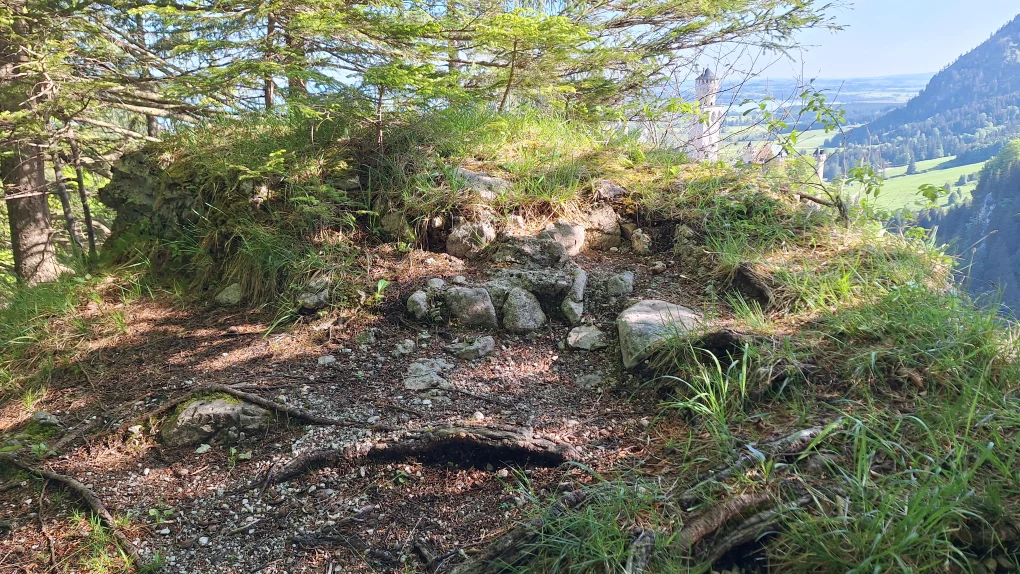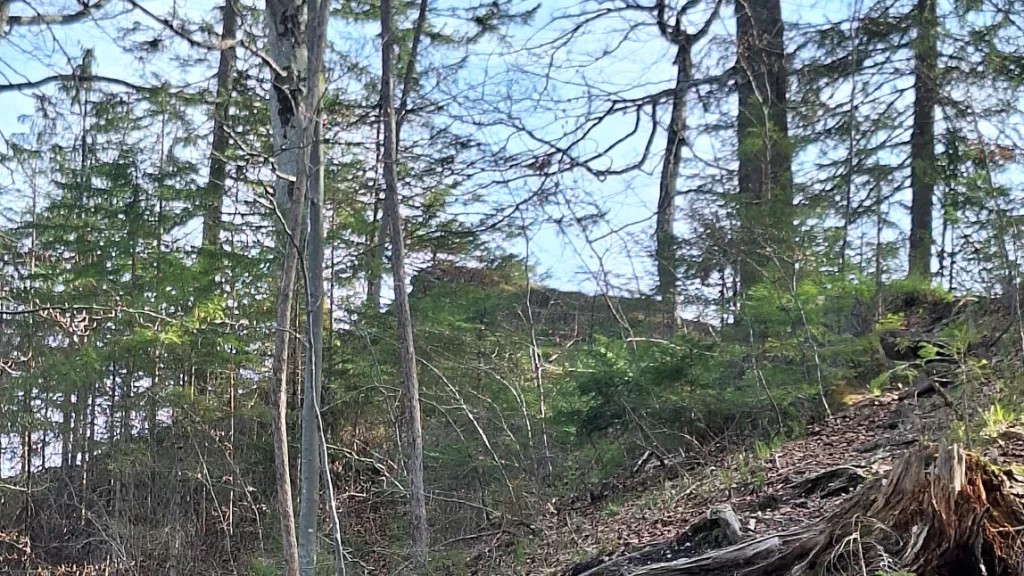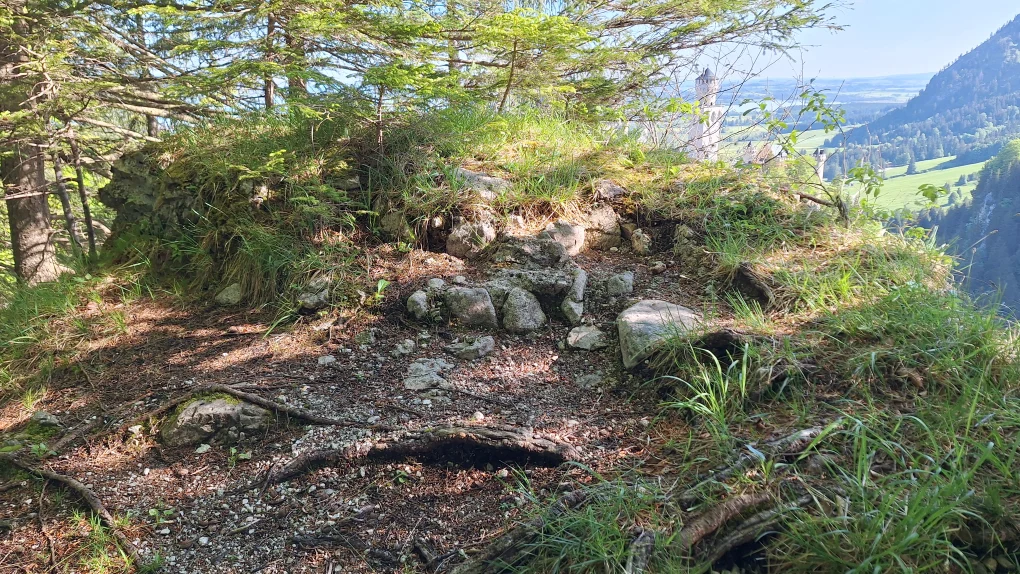Sylphentürm, Thousand-Year-Old Ruins
On the tour to Neuschwanstein Castle, I talk about the Knights of Schwangau and how they built several castles in the area. Possibly the earliest of the Schwangau Knights’ constructions was atop a high cliff above a narrow gorge and overlooking the ridgeline where they would soon build the first Hohenschwangau castle.
There, sometime around the 10th century, they built a tower, six meters square and of unknown height. At the top of the tower, they put two piles of wood and jars of oil—what all to make a fire with. It was part of an early-warning system of signal towers that ran throughout the County of Tyrol, which comprised this section of the Alps.
In case of any threat, they would light the fire. One pile was dry wood, the other damp. If at night, the dry-wood fire made a bright light that could be seen for a great distance in the darkness. In daylight, the damp wood made a smoky fire.

Before Ludwig II built Neuschwanstein, he had made a topographic plan of the area. Atop the hill next to the bridge, there is marked “Sylphentürm.” Türm, in German, is the word for tower. Sylphen is the plural of sylph. The word sylph, which came into the English language, had only been invented three hundred years before by a German philosopher who intended it to mean an air fairy.1
During Ludwig’s time, there remained still a good portion of the wall, visible from the Hohenschwangau ruins. We imagine that, when the mist rises from the Pöllat River to fill the gorge, the tower on cliff’s edge might appear as though it hangs in the air.
I learned about the existence of the tower and its ruins from an article “Die vergessen Türme” (The Forgotten Towers), which appears in the local weekly paper Kreisbote, December 2017.2 It is part of a series of forty historical articles that ran in the Kreisbote from October 2015 through January 2023. The series’ author is Magnus Peresson, a local architect and historian. In the article, Peresson tells about two other local signal towers from the Tyrolian system: One he calls Siebeler. For the other, he gives no name. Neither has any more stones showing.

Caution: Should one ignore the signs in German, showing falling stick figures surrounded by red exclamation points, and cross the barbwire, a few steps take you five meters up to the stones. One step beyond takes you 140 meters down to gorge bottom. Lebensgefahr is German for Danger to Life!
- Philippus Aureolus Theophrastus Bombastus von Hohenheim, commonly known as Paracelsus (1493-1541), was a philosopher of the German Renaissance. He was also a physician and alchemist. In A Book on Nymphs, Sylphs, Pygmies, and Salamanders, and on the Other Spirits, Paracelsus conceives four types of fairies, one for each of the elements: gnomes (earth), salamanders (fire), undines (water), and sylphs (air). ↩︎
- Magnus Peresson, “Die vergessenen Türme,” Kreisbote, December 20, 2017, https://www.kreisbote.de/lokales/fuessen/historiker-magnus-peresson-nimmt-eine-zeitreise-9459993.html. ↩︎
